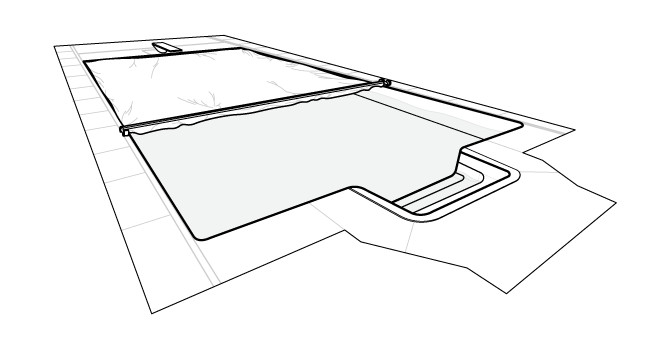The swimming pool is often an area of a property that uses a considerable amount of water.
In terms of pool design, outdoor, unheated and natural pools are the options with the lowest environmental impact. Where applicable, particularly for outdoor pools with a relatively short season, installation of a natural pool is best practice. Outdoor pools can converted to natural pools relatively easily.
Drainage barriers can be installed around the pool to collect and recirculate overflow and splash water. Ozone generators or ultra-violet (UV) systems may be installed to reduce chlorine requirements. Simple solar heating tubes or a heat-pump system may be installed to heat (or pre-heat) pool water, and a heat recovery system with controlled ventilation installed to recover heat from exhaust ventilation air. Motion sensors can be installed to switch off features such as fountains when no users are present.
Installation of a water sub-meter to record inflow to the pool is an important measure to enable performance tracking and the identification of problems. The studies have shown that majority of public swimming pool managers could not provide annual water consumption data. Monitoring and benchmarking of water, energy and chemical consumption is therefore a key best practice measure for pool/accommodation managers.

Environmental benefits
Processed to reduce evaporation can potentially save annually up to 370m3, backwashing processes up to 550 m3, reverse osmosis processes up to 500 m3 and showers up to 520 m3 annually.
Proper control of pool filtration and disinfection can significantly reduce chlorine (e.g. sodium hypochlorite) inputs. UV-disinfection of pool water can reduce chlorine inputs by up to 30 %, and may also reduce the need for top-up water to dilute chlorine by-products
Reduced costs
For a 25 m pool situated within a 1000 m2 complex, energy savings from good management practices and basic retrofits such as variable speed pumps and heat exchangers could range from EUR 50 000 to EUR 85 000 per year at energy prices of EUR 0.06 to 0.10 per kWh.
Economic benefits associated with water savings are smaller than benefits arising from energy savings. At a water price of EUR 2.50 per m3, annual water savings of almost 2 000 m3 for a 25 m pool would translate into annual cost savings of almost EUR 5 000.
Video
The use of this video on this site has been granted by The Travel Foundation.